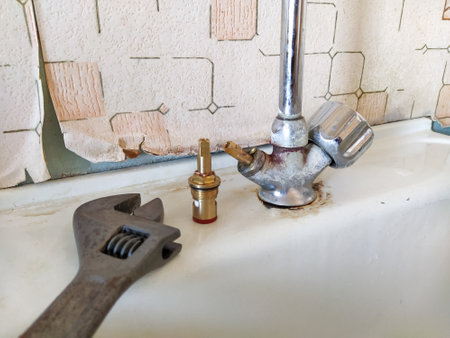What is Emergency Plumbing and Drainage Assistance?
Emergency plumbing and drainage assistance refers to immediate, professional help provided when unexpected issues arise with your home’s water supply, pipes, or drains. In the UK, these emergencies are more common than you might think—burst pipes during a frosty winter night, blocked drains causing flooding in the kitchen, or even a sudden leak threatening to damage your property. Such situations require swift action to prevent further damage and maintain the safety and comfort of your household.
This type of service is crucial for British homes due to our often unpredictable weather and the age of many properties across the country. From terraced houses in London to cottages in Yorkshire, plumbing problems can quickly escalate if not addressed promptly. Emergency assistance ensures that skilled engineers are available around the clock, providing peace of mind whether it’s late at night or during a bank holiday.
Typically, homeowners seek emergency plumbing and drainage support when faced with water leaks, burst pipes, blocked toilets, or overflows that cannot wait until normal business hours. Having access to this kind of service means you can minimise disruption, avoid costly repairs later on, and keep your family safe from potential health risks linked to water damage and unsanitary conditions.
2. Typical Coverage in UK Policies
When considering emergency assistance for plumbing and drainage in the UK, it’s essential to understand what a typical policy will cover. Most providers offer a comprehensive set of protections designed to help homeowners swiftly resolve urgent issues without incurring unexpected expenses. Below is a detailed breakdown of the main features you can expect from standard UK emergency plumbing and drainage insurance:
Main Areas Covered
| Issue | Typical Coverage Details |
|---|---|
| Burst Pipes | Immediate call-out and repair of any internal or external burst pipes causing water leaks and potential property damage. |
| Blocked Drains | Clearing blockages in sinks, toilets, showers, and main household drains that cause flooding or prevent normal water flow. |
| Water Supply Failures | Emergency assistance if your property suddenly loses its water supply due to plumbing faults within the boundary of your home. |
| Leaking Taps & Fixtures | Cover for repairs to leaking taps, stopcocks, or valves when they are causing water wastage or risk of flooding. |
| Toilet Failures | Urgent repairs if your only toilet becomes blocked, stops flushing, or overflows, making it unusable for the household. |
| Internal Leaks & Overflows | Treatment of leaks from radiators, tanks, or pipework that threaten to cause damage inside your home. |
| Emergency Call-Outs 24/7 | Most policies provide round-the-clock access to qualified engineers with no additional call-out charge for covered incidents. |
What’s Usually Not Included?
While these policies are broad, they do have exclusions. For example, gradual wear and tear, pre-existing problems before the policy started, and issues with appliances (like dishwashers) connected to your plumbing system may not be covered. Always check the fine print so you’re clear on where support starts and ends.
Family Experience Example:
If you’ve ever had a pipe burst on a chilly Sunday evening, you’ll know how reassuring it is to have access to emergency assistance. With most UK policies, a plumber will be dispatched promptly—often arriving within hours—to tackle the problem and minimise disruption for your family.

3. Common Exclusions and Limitations
While emergency assistance for plumbing and drainage offers homeowners valuable peace of mind, it’s essential to understand what these policies typically do not cover. Most providers in the UK set clear boundaries on their coverage, and being aware of these exclusions can save you from unexpected disappointment when you need help most.
Gradual Leaks and Wear & Tear: One of the most frequent exclusions is gradual leaks or damage caused by long-term wear and tear. For instance, if your kitchen tap has been dripping slowly for months and eventually causes water damage, your policy is unlikely to pay out. Emergency assistance usually covers sudden and unforeseen leaks rather than issues that have developed over time due to neglect or age.
Pre-existing Plumbing Issues: If there are known faults or problems with your plumbing system before taking out the policy, claims related to these pre-existing issues will generally be refused. For example, if a surveyor noted cracked pipes during your house purchase but repairs were never carried out, your emergency cover won’t step in should those pipes fail later on.
Routine Maintenance: These policies are not designed to replace regular care and maintenance. Tasks such as unblocking a slow-draining sink, descaling taps, or annual boiler servicing fall outside the scope of emergency assistance. Homeowners are expected to keep up with routine maintenance themselves or hire professionals separately.
Other Typical Exclusions: Coverage may also exclude outdoor drains not located within the property boundary, plumbing fixtures installed incorrectly, or damage resulting from DIY attempts gone wrong. It’s always wise to read the fine print so you’re clear about any limits—especially for older homes where plumbing quirks are common.
In summary, while emergency plumbing and drainage cover can be a real lifesaver during sudden crises like burst pipes or blocked drains, it’s important for UK families to know its limitations. Make sure you maintain your home regularly and address minor plumbing concerns before they turn into full-blown emergencies that might not be covered.
4. How Emergency Call-Outs Work
When a plumbing or drainage emergency strikes at home, understanding how the emergency call-out process works can help British households feel more prepared and less stressed. Here’s what you can generally expect when requesting emergency assistance in the UK:
Typical Steps in the Emergency Call-Out Process
| Step | Description |
|---|---|
| Initial Contact | You phone your provider’s emergency helpline, which is usually available 24/7. Be ready to provide details about the issue and your address. |
| Assessment | The operator will assess the urgency of the problem, often asking questions to determine if immediate attendance is required or if it can wait until normal hours. |
| Dispatching an Engineer | If it’s deemed an emergency (like a major leak or blocked drain causing flooding), an engineer will be dispatched straight away. Most reputable companies aim for a response time within 2-4 hours, though this may vary based on location and weather conditions. |
| Arrival and Diagnosis | The engineer arrives, assesses the situation, and takes steps to prevent further damage. They’ll explain what needs to be done before starting any repair work. |
| Resolution or Temporary Fix | If possible, the issue will be resolved immediately. If specialist parts are needed, a temporary fix may be applied with a follow-up visit arranged. |
| Completion and Documentation | Once finished, you’ll receive documentation detailing the work carried out and any recommendations for further repairs or maintenance. |
24/7 Availability: What It Means for Your Family
Most UK providers understand that plumbing disasters rarely stick to office hours. That’s why many offer true round-the-clock service, including weekends and bank holidays. This means families don’t have to wait until Monday morning or risk worsening property damage overnight. However, always check your policy as some providers may charge higher fees for out-of-hours call-outs.
Response Times Across the UK
| Region | Average Response Time |
|---|---|
| London & South East | 1-2 hours |
| Northern England & Midlands | 2-3 hours |
| Scotland & Wales | Up to 4 hours (may vary in rural areas) |
A Practical Example from a British Homeowner’s Experience:
This spring, our kitchen tap started leaking dramatically late on a Sunday evening. We rang our emergency cover provider who answered promptly. The operator calmly guided us through isolating the water supply while dispatching an engineer. Within two hours, he arrived with all necessary tools and managed a quick repair—saving our wooden floors from water damage. The entire process was efficient and reassuring, demonstrating the real-world value of reliable emergency assistance for British families.
5. British Case Study: A Real-life Home Experience
To illustrate the importance of emergency assistance for plumbing and drainage, lets look at a real-life example from a family in Manchester. The Thompsons, a family of four, were enjoying a quiet weekend when they suddenly noticed water pooling around their kitchen floor. Upon closer inspection, it became clear that a burst pipe under the sink was to blame. Panic set in as they realised how quickly such an issue could escalate, potentially damaging their flooring and cabinetry.
Fortunately, the Thompsons had invested in comprehensive emergency plumbing and drainage cover as part of their home insurance package. Within an hour of placing a call to their provider’s 24-hour helpline, a certified local plumber arrived at their doorstep. He swiftly assessed the situation, isolated the leak, and replaced the damaged section of piping – all costs covered by their policy. Not only did this immediate response prevent further damage, but it also spared the family from significant financial outlay and stress.
The experience taught the Thompsons several valuable lessons. Firstly, they realised that emergencies rarely happen at convenient times, making round-the-clock assistance crucial. Secondly, having a trusted tradesperson dispatched by their insurer gave them peace of mind regarding quality and safety standards. Lastly, reviewing the fine print of their policy ahead of time meant there were no surprises about what was or wasn’t included in their coverage.
This scenario highlights how vital it is for UK households to consider emergency assistance for plumbing and drainage – not just for peace of mind, but also for practical support when unexpected problems arise. Taking proactive steps by securing suitable cover can make all the difference during those stressful moments when quick action is needed most.
6. Making a Claim: Practical Steps for UK Households
When a plumbing or drainage emergency strikes, knowing exactly how to make a claim can make all the difference. Here’s a straightforward guide tailored for UK residents to help you navigate the claims process smoothly, ensuring your home gets the attention it needs as quickly as possible.
Step-by-Step Guide to Filing Your Claim
1. Contact Your Emergency Helpline
As soon as you notice an issue—whether it’s a burst pipe or a blocked drain—call your insurer’s 24-hour emergency helpline. Most policies require that you notify them immediately to ensure coverage applies.
2. Gather Essential Information
Be ready with your policy number, contact details, and a clear description of the problem. Take note of when the issue started and any actions you’ve already taken to prevent further damage (such as turning off the water supply).
3. Document the Damage
Take photos or videos of the affected area before any repairs are made. This evidence will be vital for your claim and helps speed up approval from your insurer.
4. Follow Insurer Instructions
Your insurer may have preferred contractors or specific steps for arranging emergency repairs. Always follow their guidance to avoid invalidating your claim.
5. Keep All Receipts and Records
If you pay for emergency work upfront, keep all invoices and receipts safe. These will be required when submitting your claim for reimbursement.
Documentation Needed
- Your policy documents and number
- Proof of identity and address
- Photos/videos of the damage
- Receipts for any immediate work carried out
Top Tips for a Smooth Experience
- Familiarise yourself with your policy before an emergency occurs so you know exactly what’s covered.
- Act quickly—delays in reporting can sometimes affect eligibility.
- Maintain regular property maintenance; insurers may decline claims resulting from neglect.
A Family Perspective
Many UK households find it helpful to keep all insurance documents in one accessible place—perhaps in a kitchen drawer or a family filing folder—so everyone knows where to look in case of an emergency. Teaching older children or other family members how to respond during such situations can also reduce panic and help things run smoothly if disaster strikes.


